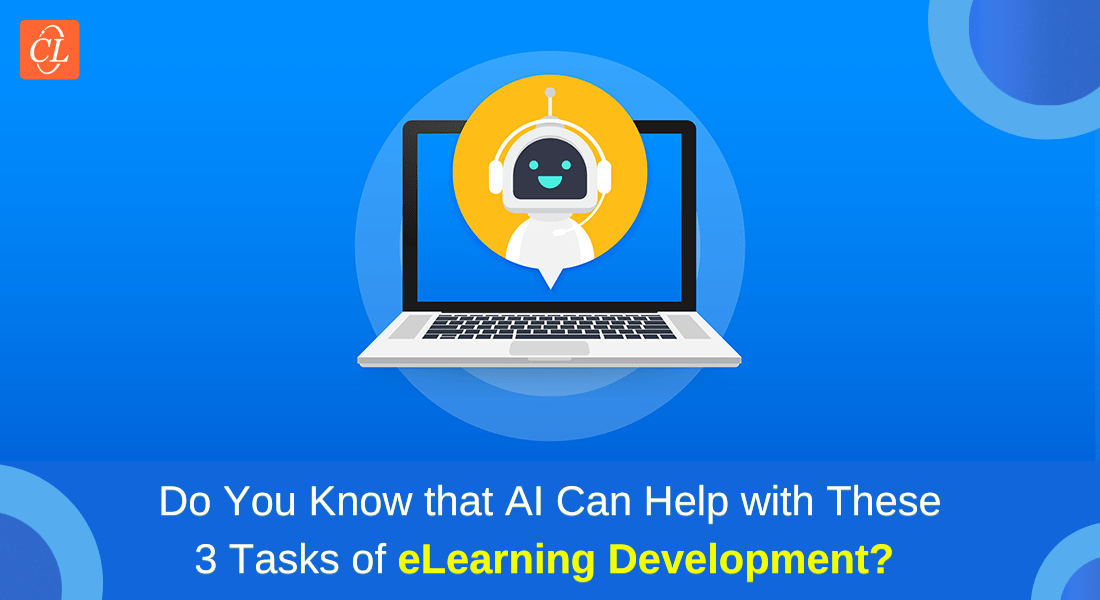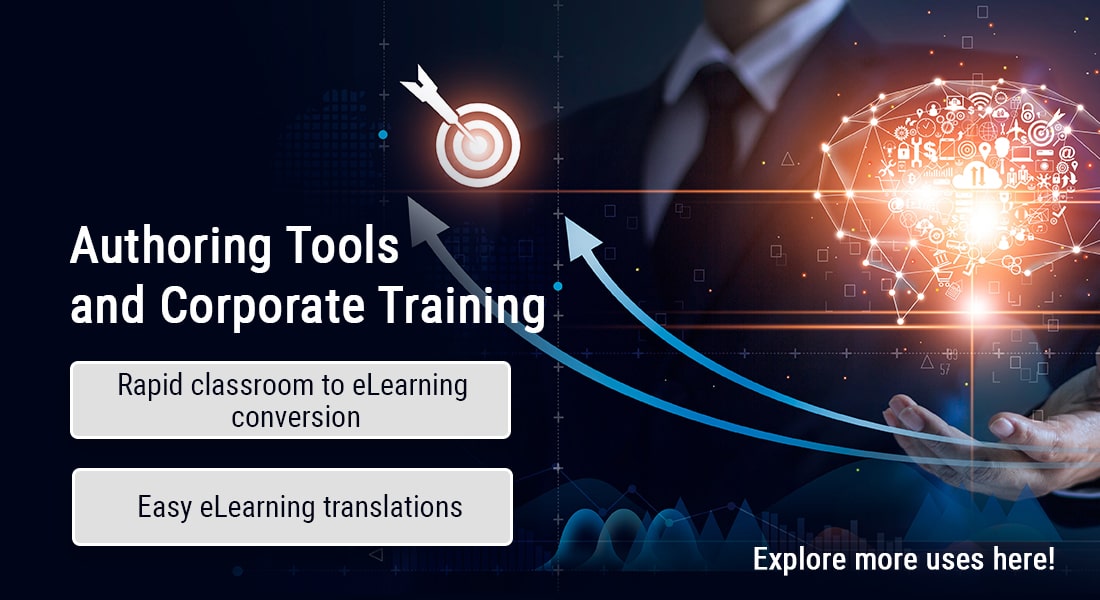Top 3 Tasks AI has Automated to Make eLearning Development Faster

The last decade is all about digitalization where all the work that was previously done by humans has started to get accomplished with the help of technology. There are various sorts of technological advancements to have made their mark in eLearning development along with other departments and artificial intelligence (AI) is definitely one of them. The L&D teams and organizations have started using AI for almost all of their tasks that previously required a lot of time and effort by humans. AI tools have helped them save a considerable amount of time so humans perform only specific and personalized tasks. This blog will discuss 3 such areas or specific tasks that AI has automated and made eLearning development fast and easy for organizations.
Are You Implementing AI for Your eLearning Development for The First Time?
Here are some tasks that can easily be automated:
- Image Development and Editing
- Text-to-Speech Conversion
- eLearning Translation
Top 3 Tasks AI has Automated to Make eLearning Development Faster
1. Image Development and Editing
Images play a huge role to design visually attractive eLearning courses for corporate training but imagine you have to roll out 20 courses for different departments in your organization, let’s say within 3 months. You might end up wasting a lot of your time designing the images from scratch or blow up your budget if you decide to buy them. This is where AI comes into play as it allows images to be generated from texts and even speech because it’s not always the case that you have premade images to just reuse. These images can now be used anywhere, even for embedding within courses, as microlearning assets, or even your branding icons, avatars, and backgrounds.
These text-image generators work on the concept of artificial neural networks where complex mathematical algorithms are used to figure out various patterns and make predictions accordingly, and then use machine learning to create the image you desired. Some of the popular AI image generators are Midjourney, DALL-E 2, NightCafe, and StarryAI.
Even if you do have a collection of images that look unappealing, AI can edit them so that they are completely reformed, like enhancing the colors, playing around with their tone using filters, changing the background, etc. Some of the popular AI-powered image editing tools are Luminar AI, Prisma, Canva, and your forever classic Adobe Photoshop.
Converting or generating images artificially can save a lot of time and human effort for organizations and helps them focus on other important aspects of their rapid eLearning development. They can leave the job of image designing for the AI, saving them a part of their budget they might have kept aside to hire multiple graphic designers.
2. Text-to-Speech Conversion
Text-to-speech has been in the industry for quite a time, but the layers of development it had over the years is an interesting topic to be discussed. Previously, the text was just robotically narrated into speech, which wasn’t satisfying to hear at all. But that isn’t the case now, as AI voiceover tools like Amazon Polly and Speech Studio have completely transformed text-to-speech (TTS) conversion by making them sound completely human-like. Text-to-speech conversion tools can immensely help organizations to generate eLearning courses that are accurately narrated into multiple languages in various native accents and proper region-specific pronunciations to engage their global workforce effectively.
The conversions can work vice-versa as well, where speech is converted into texts, which helps a lot in virtual classrooms because learners can read the transcriptions of the lecture they previously attended to retain the information instead of watching the recording. A lot of operating systems come with speech-to-text conversion options as a part of their accessibility feature, and Dragon Speech Recognition is one of the popular external tools among organizations.
The AI utilizes Machine Learning and Deep Learning technologies to understand multiple region-specific accents, phrases, pronunciations, and other complex elements of speech to either generate highly accurate human-like voiceovers or identify various accents and tones to transcribe the text into speech.
3. eLearning Translations
Since delivering quality training to a global workforce is an indispensable task, eLearning translation is one of the crucial aspects that make it possible. Translating eLearning courses, whether it’s their course content, extra resources, or narration, was previously carried out entirely by humans, which was way too troublesome for organizations. Now there are various advanced AI translation tools that have exponentially eased out human efforts and sped up the eLearning development process. Apart from external AI tools, organizations also use modern eLearning authoring tools like Lectora, iSpring, and dominKnow to translate their eLearning courses effectively.
AI translation tools use the DL and NMT technology that replicates the idea of humans learning a language for the first time. Some of the popular AI translation tools used among organizations are DeepL Translate and Translate Me whereas Google Translate is great for everyday use.
Wrapping Up!
eLearning development being automated by AI has saved an immense amount of time, money, and effort for humans because of the accuracy it has started to achieve. The best part about AI is that its potential is still not entirely explored. Scientists and programmers are coming up with new and interesting technologies and innovations every now and then, and in the coming future, it’s said that AI robots will carry out most human activities and tasks.
Let’s see what the future holds for eLearning industries, and when we are talking about the future, 2023 is about to start, and just like AI, there are multiple trends that are expected to help organizations create a robust learning framework. Explore the eLearning trends for 2023 with the help of this free webinar recording and get yourself ready for the coming future.





